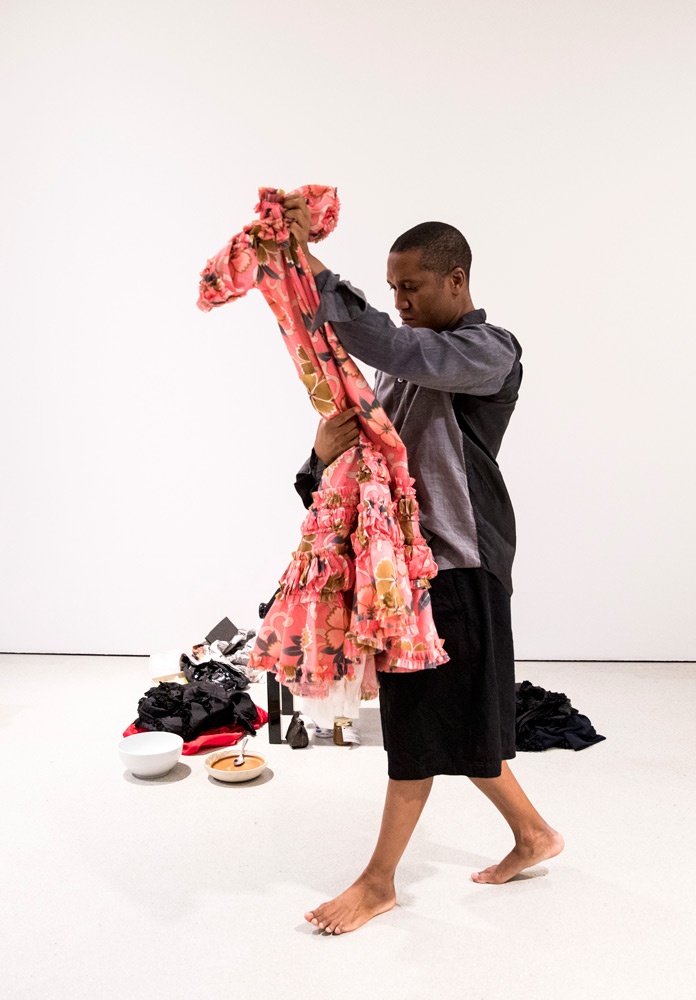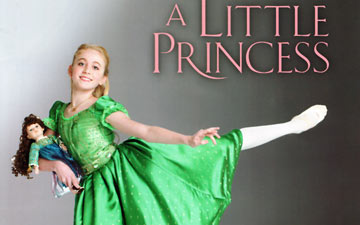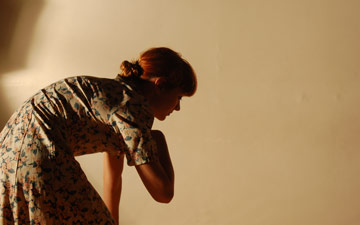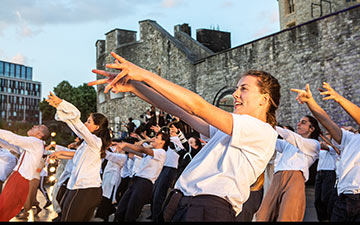
© Tristan Fewings. (Click image for larger version)
Trajal Harrell
Hoochie Koochie
★★★★✰
Barbican Art Gallery, London
20 July 2017 + 2 other performances
betatrajal.org
www.barbican.org.uk
Walking into the American dancer/choreographer Trajal Harrell’s first ever performance exhibition is like falling down the rabbit hole into another dimension. Dance works selected from across his 16-year career burst into life in different parts of the gallery space; they are pugnacious, playful, challenging, thrumming with cross-cultural references and forcing unexpected juxtapositions. It’s bewildering, but ultimately beguiling.

© Tristan Fewings. (Click image for larger version)
The minimalist voguing of Harrell’s early work It Is Thus… repeats on a loop – one dancer striking and holding fierce poses to Ode to Boy by Yaz. Let’s Get Sick is an explosion of catwalk attitude and voguing “realness” in which two dancers stomp and strut around the whole space, leaving us trailing, slack-jawed in their wake. In a tiny darkened room, Christina Vasileiou removes her bikini to a soundtrack of Messiaen with the sparse ritualism of a Japanese tea ceremony, for a piece entitled Bathing Suit. The imperiously catlike Antonio Branco plays with his select seated audience by sitting on each person in turn for Showpony. Photographs of varying levels of explicitness flash up on the walls. We are definitely not in Kansas any more.
The central piece around which this exhibition is constructed is 2016’s Caen Amour, created during Georgia-born Harrell’s two-year residency at the Museum of Modern Art in New York. The set is a dilapidated, ultramarine doll’s house-style façade; at the back it is an unadorned, cluttered dressing room area.
Harrell’s muses Thibault Lac and Ondrej Vidlar, Harrell himself and the female dancer Perle Palombe circulate around these spaces. When in front they perform seductive dances, holding items of clothing in front of them or clasped to their bodies, recalling cowboys, sailors, “Oriental”, “exotic” African and striptease dancers. Harrell, as in a number of his pieces, is mining the history of the hoochie-koochie, the erotic, travelling show dance spectacle of the late 19th century – a western imitation of belly dancing – which he sees as a precursor of modern dance, and which he uses as a framework through which gender and racial objectification can be explored.
Lac and Vidlar adopt the sensuous body language of the “exotic” female dancers, stepping on the balls of their feet as if in invisible high heels, fluttering and twisting provocatively. Palombe appears naked clutching a ball gown to her, flinging her legs up in a messy cancan; as the piece reaches its climax she writhes naked in front of a screen so from the front only her shadow can be seen, as Harrell slumps, clinging to a shocking pink dress and crying. The artifice and constructed nature of this femininity is highlighted when the audience members get up off their cushions and move to the back, where amid the messy detritus of performance, the dancers shuck off their costumes, blow their noses, take a drink, tidy up, take a break and perform their “real” selves.

© Tristan Fewings. (Click image for larger version)
The exhibition wall notes describe Caen Amour as a fictional encounter between the art nouveau icon Loïe Fuller, the Japanese butoh pioneer Tatsumi Hijikata and the Comme des Garçons fashion designer Rei Kawakubo. Harrell’s work is littered with these playful “what ifs” – the frantically wired Ghost Trio takes as its starting point what would have happened if Hijikata and the French contemporary dancer Dominique Bagouet had met in a bar (butoh is a significant influence on Harrell’s work that he has been exploring for some years). Most famously, though, Harrell’s series of works Twenty Looks, or Paris Is Burning at the Judson Church imagines what would have happened if in 1963 some of the dancers from Harlem’s voguing ballroom scene had travelled downtown to the home of the Judson Dance Theater collective in Greenwich Village, where postmodern dance was being constructed with a Dogme-style manifesto demanding authenticity.
Two evenings have been set aside for works from this eight-part series: the first was a presentation of Made-to-Measure, which switches the proposition and imagines Judson pioneers heading across 110th Street into Harlem. Lac, Vidlar and Harrell, in black floaty dresses, began by sitting calmly; first Harrell then Lac started to weep, while Vidlar intoned “Don’t stop” with increasing insistence. Adele, Antony and the Johnsons, Gillian Welch, hip hop and Billie Holiday fed into a morphing soundtrack, some of which Lac and Harrell sung. They moved slowly but surely into a sort of testifying, in the black Pentecostal tradition – then suddenly, thrillingly, launched into catwalk strutting, hip hop uprocking and full-on voguing; a rave that, intriguingly, carried within its wild abandon the steely rigour of postmodern dance a la Trisha Brown. It was utterly surprising, exhilarating – and as the high subsided into a mournful rendition of Indigo Girls’ Blood and Fire, deeply affecting.

© Tristan Fewings. (Click image for larger version)
Harrell’s work has rarely been seen on this side of the Pond, so it was a brave decision by the Barbican to stage this exhibition. But it makes perfect sense to witness Harrell’s deeply intelligent, ceaselessly questioning work in a gallery space, particularly as his focus on constructed versions of history also incorporates the idea of dancers’ bodies – and their muscle memory – as archives. It’s hard to imagine what this work would look like performed by people other than Harrell and his muses – all the more reason to immerse yourself in his challenging dance world now.

















You must be logged in to post a comment.